Glove Buying Guide

In baseball and softball, a fielding glove is one of the most important tools you’ll need to become a successful player. In a lot of ways, it’s the final piece to that spectacular diving catch in the outfield or what you need to stop that line drive down the third base line. Not all baseball gloves and softball gloves are created equal in terms of size and material. What size glove you should use largely depends on the position you play, but there are also other factors that help determine exactly which glove you should equip yourself with.
In this guide, we will cover:
- The parts of a baseball and softball glove
- Guidelines for selecting a glove
- The proper way to measure a baseball or softball glove
- Differences in the gloves by position
Parts of a Baseball/Softball Glove
There are four major important parts to a baseball or softball glove and they are specified below:
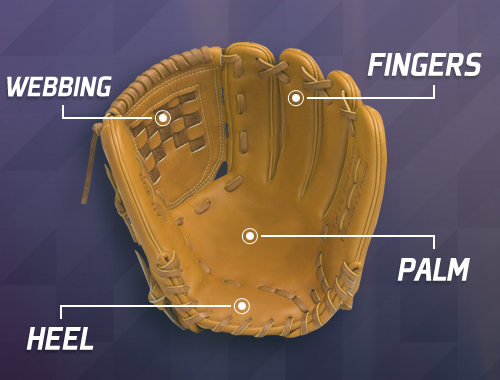
When buying a glove, there are a few basic terms that have to be defined first:
- Type of throw - Refers to which hand a player uses to throw the ball (not which hand the glove is on), depending on if the player is a righty or a lefty.
- RHT - Right hand thrower. Means the player throws with his or her right hand and wears the glove on the left.
- LHT - Left hand thrower. Means the player throws with his or her left hand and wears the glove on the right.
Guidelines for Selecting a Glove
We’ve already mentioned that the best glove for you depends on which position you play. But there are other factors as well:
Pocket Size
The pocket size you select will depend on the position you play. For example, an outfielder’s glove will have a bigger pocket than that of a middle infielder, allowing outfielders to catch fly balls with more ease. Middle infielders (shortstops and second baseman) usually have a shallower pocket, which allows them to get the ball out of the glove quicker, particularly important on double plays.
Webbing
There are different types of webbings found in gloves for baseball and softball players. The type of webbing most common for infielder's gloves contains a looser stitch which gives more control in hopes of getting the ball out quicker - it also doesn’t pick up large clumps of dirt with it. Outfielders will typically choose gloves with open webs to allow for visibility while shielding the sun. Traditionally, there are eight different kinds of webbings to choose from:
- Closed/Basket Web
- H-web
- I-web
- Trapeze Web
- Modified Trapeze Web
- Two-piece Closed Web
Types of Baseball Glove Web Designs
As previously discussed, there are 8 general types of web designs for baseball gloves. There are more branches of designs, but these are your core 8.
Closed/Basket Web
Closed web and basket web gloves are designed to conceal the ball in the glove. They are typically used by catchers and pitchers, as well as some middle infielders. They’re easy to close with extra flexibility in the design.

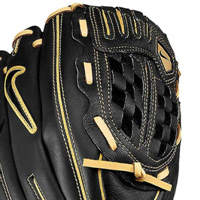
H-web
Commonly used by outfielders and third basemen the H Web design, also known as dual post web, offers a sturdy yet flexible structure while providing the ability to see through webbing for pop ups. Outfielders can use this design as well.

I-web
The I Web designs is used mostly by middle infielders due to the open webbing, which allows dirt and debris to fall out and not get stuck while fielding and throwing a ball. It also helps shield the sun from fly balls.
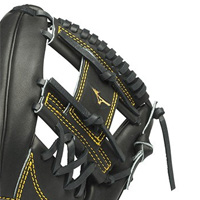
Trapeze Web
Trapeze web gloves are used almost exclusively by outfielders. The design has a deep pocket for maximum catching range and allows for visibility while shielding the sun from your eyes.
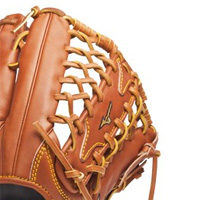
Modified Trapeze Web
The modified trapeze web is a versatile design that can be used by outfielders, infielders, and pitchers. It’s differentiated from the standard trapeze design by the strip of leather on the top of the web, which adds stability.
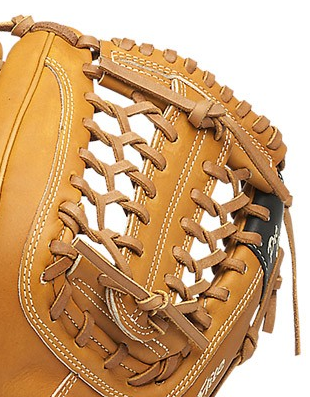
Two-Piece Closed Web
A perfect glove for pitchers, the two-piece closed web design offers an easy place to conceal your hand and the ball while on the mound.
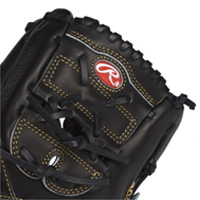
Padding
Padding preference is another thing to consider. The amount of padding you have on your glove depends on the position you play. Catcher’s mitts feature more padding to protect their hands from pitchers’ throws. Other positions, such as first and third base, may also need more padding. Recently, the popularity of extra wrist padding has grown, especially at the corner infield positions.
Wrist Adjustments
Some gloves are made with wrist adjustments that allow players to make the glove fit snug to their hand, allowing them to put on and take off the glove with ease. These can either be Velcro, a buckle system, laced, or a D-ring fastener.
Material
Gloves can be made of many different types of materials including leather, synthetic materials, mesh, and treated leather. Leather is the preferred material among players due to their durability and comfort. Players may opt for treated leather gloves which are preconditioned with oils for quicker break in period. Some prefer a mesh backed glove for a lighter glove. For younger players, a synthetic glove is good it's the lightest and most inexpensive glove available.
Baseball Glove Web Design Chart by Position
Certain positions require a baseball glove with a particular webbing. Check out the list below for common webbings you'll find for each position:
| Position | Web Design | Description |
| Outfielders | H-web Trapeze Modified Trapeze |
Bigger, deeper pockets |
| Middle Infielders (SS/2B) | I-web Two-piece Closed |
Shorter, shallow pocket |
| 3rd Basemen | H-web Modified Trapeze Closed |
Stronger, deeper pockets |
| Pitchers | Basket Two-piece Closed Closed Modified Trapeze |
Conceal ball and hand when selecting a pitch grip |
| Catchers | Two-piece Closed Closed |
Conceal signals to pitcher Stronger, deeper pockets Extra padding for hard throws |
| First Basemen | Two-piece Closed Closed |
Stronger, deeper pockets Extra padding for hard throws |
Fastpitch Softball Glove Web Design Chart by Position
Like baseball gloves, positions in fastpitch softball require a specific webbing:
| Position | Description |
| Middle Infielders (SS/2B) 1st Basemen Outfielders Catchers |
Open web that allows for quicker transfer to throwing hand |
| Pitchers 3rd Basemen Outfielders |
Closed web that provides more support for outfielders and shields ball in pitchers glove |
Measure a Baseball/Softball Glove Properly
When trying to find out how long a glove is, you can look on the thumb or pinky finger and you should see the size etched in the leather there. The sizes range from 8 to 15 inches, and to 35 inches for catcher’s mitts. To measure a glove that does not have a size, take a fabric tape measure and measure from the top of the index finger, down along the glove, to the center of the heel of the glove:

Now that you know how to measure the glove, you can use that measurement and reference our baseball glove sizing chart to determine how to a size a baseball glove for your position and age group. If you’re looking sizing guidance for youth baseball gloves, you can follow the same chart.
Differences Between Gloves by Position
One of the most important things to keep in mind when it comes to buying a glove is the different styles and types you can choose from. With each glove, you will have different types of webs and pockets, and the choice of the best glove for you depends on the position you play.
TThe charts below show an estimate of the size range of the glove for a specific player for both baseball and softball
Baseball Gloves Sizing Chart by Position and Age
| Age | Catcher | First Base | Second Base/ Short Stop |
Third Base | Pitcher | Outfield |
| Under 7 | 29.5 - 30" | 11.5" | 8 - 10.5" | 8 - 10.5" | 8 - 10.5" | 9 - 10.5" |
| 8 - 10 | 30 - 31" | 11.5 - 12" | 10.5 - 11.25" | 10.5 - 11.5" | 10.5 - 11.5" | 10 - 12" |
| 11 - 13 | 30 - 32.5" | 11.5 - 12" | 11 - 11.5" | 11 - 11.75" | 11.5 - 12" | 11.75 - 12.75" |
| Over 14 | 32 - 34.5" | 12 - 13" | 11.25 - 11.5" | 11.5 - 12" | 11.5 - 12" | 12 - 13" |
Fastpitch Softball Glove Sizing Chart by Position and Age
| Age | Catcher | First Base | Second Base/ Short Stop |
Third Base | Pitcher | Outfield |
| Under 7 | 29.5 - 30" | 11.5" | 8 - 10.5" | 8 - 10.5" | 8 - 10.5" | 9 - 11" |
| 8 - 10 | 30 - 32" | 11.5 - 12" | 10.5 - 11.25" | 10.5 - 11.5" | 10.5 - 11.5" | 10 - 12" |
| 11 - 13 | 31 - 32.5" | 12 - 13" | 11.25 - 12" | 11.75 - 12.5" | 11.5 - 12.5" | 11.75 - 12.5" |
| Over 14 | 33 - 35" | 12 - 13" | 11.5 - 12.5" | 11.75 - 12.5" | 11.5 - 12.5" | 12 - 13" |
Slowpitch Softball Glove Sizing Chart by Position
| First Base | Second Base/ Short Stop |
Third Base | Pitcher | Outfield |
| 12 - 13" | 11.5 - 12.5" | 11.75 - 13" | 11.5 - 13" | 12 - 15" |
Youth vs. Adult Gloves
A youth glove is designed for younger players with smaller hands. They are typically cheaper than the adult gloves and are much easier to close. The youth gloves are not made of the same high quality leather, but the materials they are made of make them easier to close. Youth gloves have smaller, narrower fingers and should be used for a player under 10 years old. They sometimes can be used for a player up to 12 years old, but after then, kids should be using adult gloves. To fit an adult glove onto a younger player’s hand, the back of the wrist can be tightened. This is done on softball gloves with a Velcro strap, but on baseball gloves, the glove needs a minor re-lacing. The picture below shows the difference of how a tightened glove looks compared to a non-adjusted one.
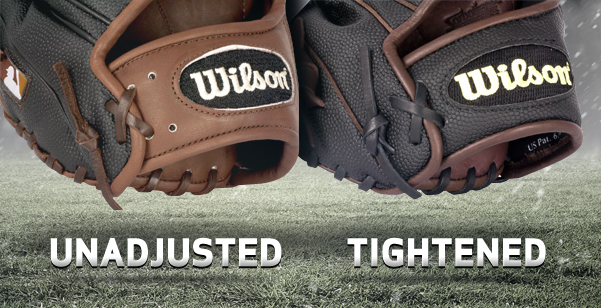
Types of Baseball Gloves by Position
Depending on the position you play, there are specific glove designs. From the web to the fingers, having the right glove for your position can make all the difference. Here is a breakdown of each positional glove and why they are important.
Catcher’s Mitts
A catcher’s glove is more commonly referred to as a catcher’s mitt because it does not have separately cut fingers like other positions. This allows catchers to catch fastballs for an entire game without wearing down quickly or the catches becoming painful. For this reason, catchers’ mitts tend to be very stiff right off the shelf and take a while to break in. Many catchers buy their replacement mitt a few months before they think their old mitt will wear out so they have time to break their new glove in. Catcher mitts tend to have a closed pocket because they can be attached with the most lacing and take the most abuse without breaking.
There is a difference between baseball and softball catcher’s mitts. The softball catcher’s mitt has a deeper pocket and thinner side walls to accommodate for the bigger ball. Catcher’s mitts are also measured differently. Instead of the standard measuring, they are measured around the circumference of the glove to capture the entire catching area of the mitt. The standard size range is from 29.5 to 34.5 inches for baseball and from 29.5 to 35 inches for softball.
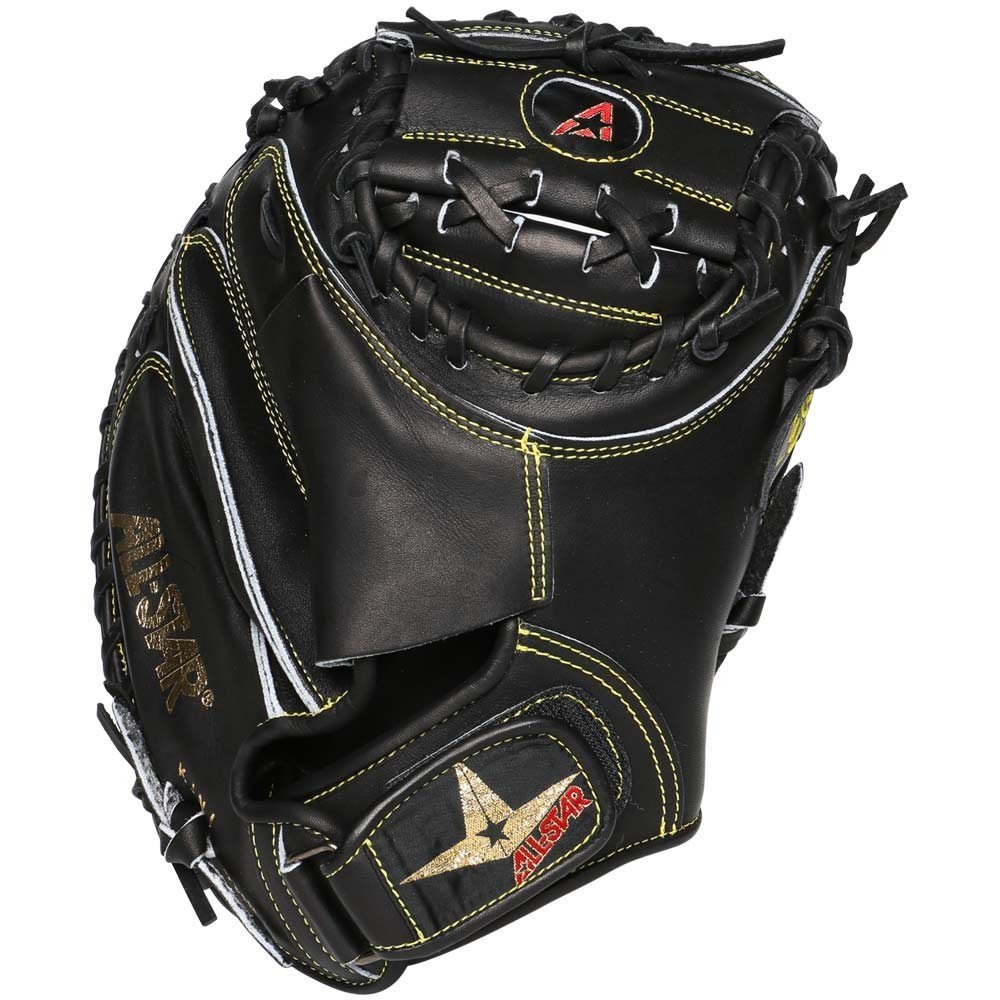
All-Star CM3000SBK Pro Elite 33.5" Baseball Catcher's Mitt
First Baseman’s Gloves
A first baseman’s glove is very similar to the catcher’s mitt with the exception that it is longer and doesn’t have as much padding. It’s designed to have the same catching area as a catcher’s glove, but is flexible for scooping throws out of the dirt. First basemen’s gloves are stronger than a standard glove so that the fingers do not flop back like a regular fielder’s glove would. They also have open web designs to allow the pocket to be a little deeper and lighter than a closed pocket. First basemen’s gloves normally start being worn at age 10 or older, because it can be difficult for younger kids to close the big glove. The typical size range for both baseball and softball is from 11.5 to 13 inches.
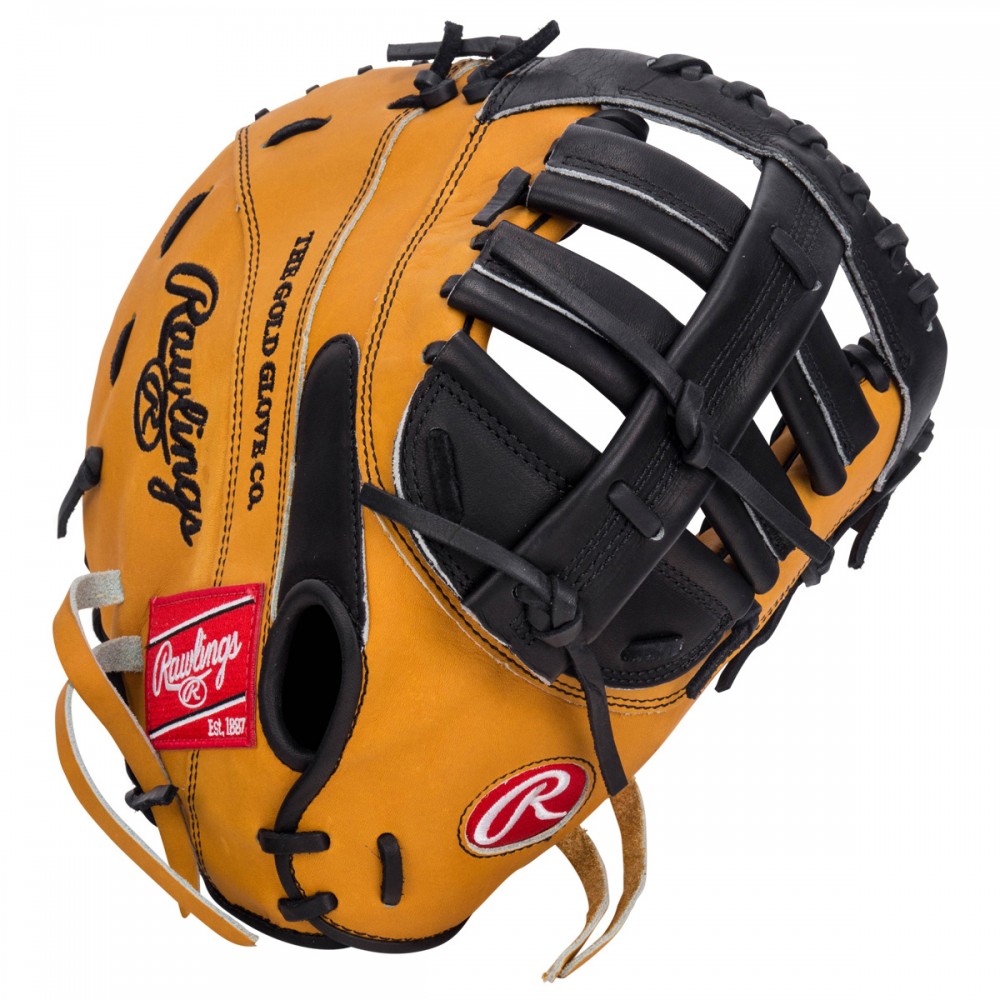
Rawlings Heart of the Hide PROSC21BUBPRO 12" Pro Stock Baseball First Base Mitt
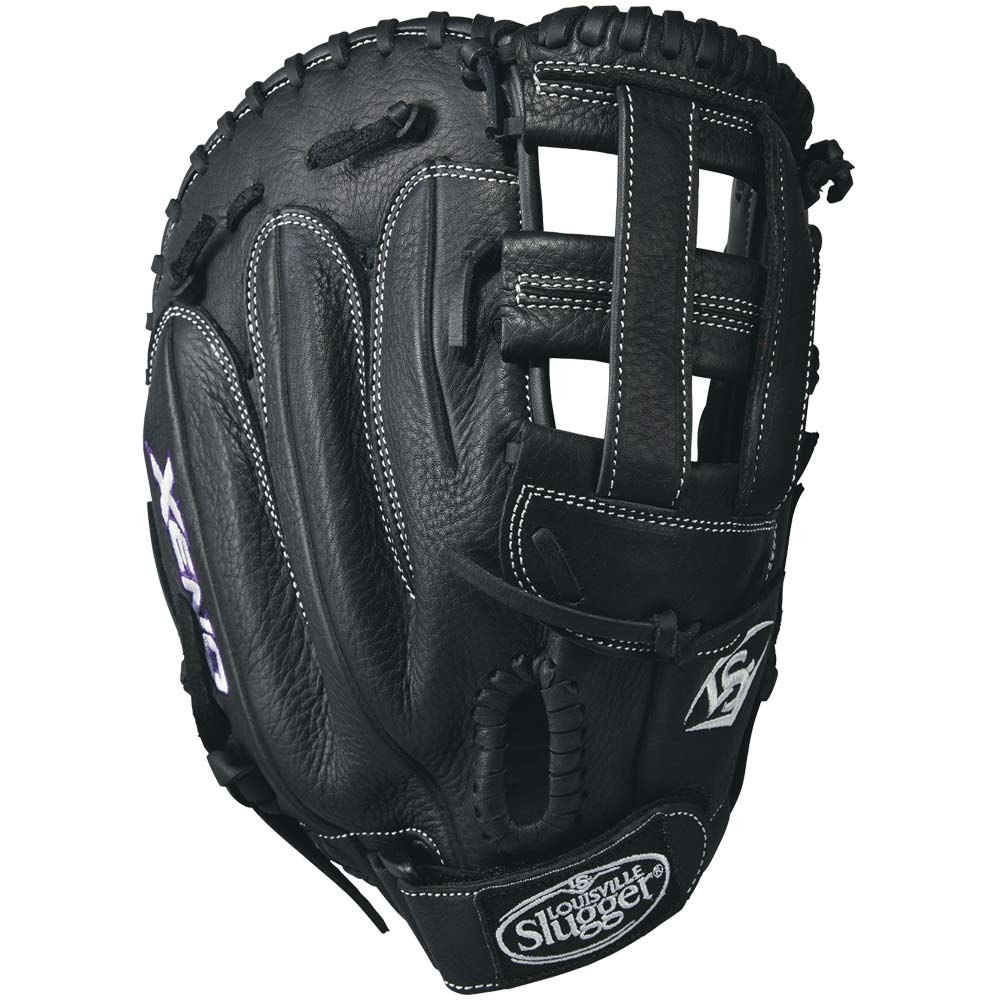
Louisville Slugger 2017 Xeno 13" Fastpitch Softball First Base Mitt
Pitcher’s Gloves
These gloves won’t have as much padding as other gloves and instead rely on being comfortable. They’re usually larger than other gloves to allow pitchers to move their hands around to grip the ball and hide their hand movements from the batter before a pitch. A pitcher doesn’t need to be as worried as other players about the performance of their glove. But the comfort is important since they are constantly catching and will often have to stop line drives hit back through the middle. It’s also important to make sure the glove isn’t too heavy. Many manufacturers make light versions of high-end gloves with special materials that weigh significantly less than standard gloves.
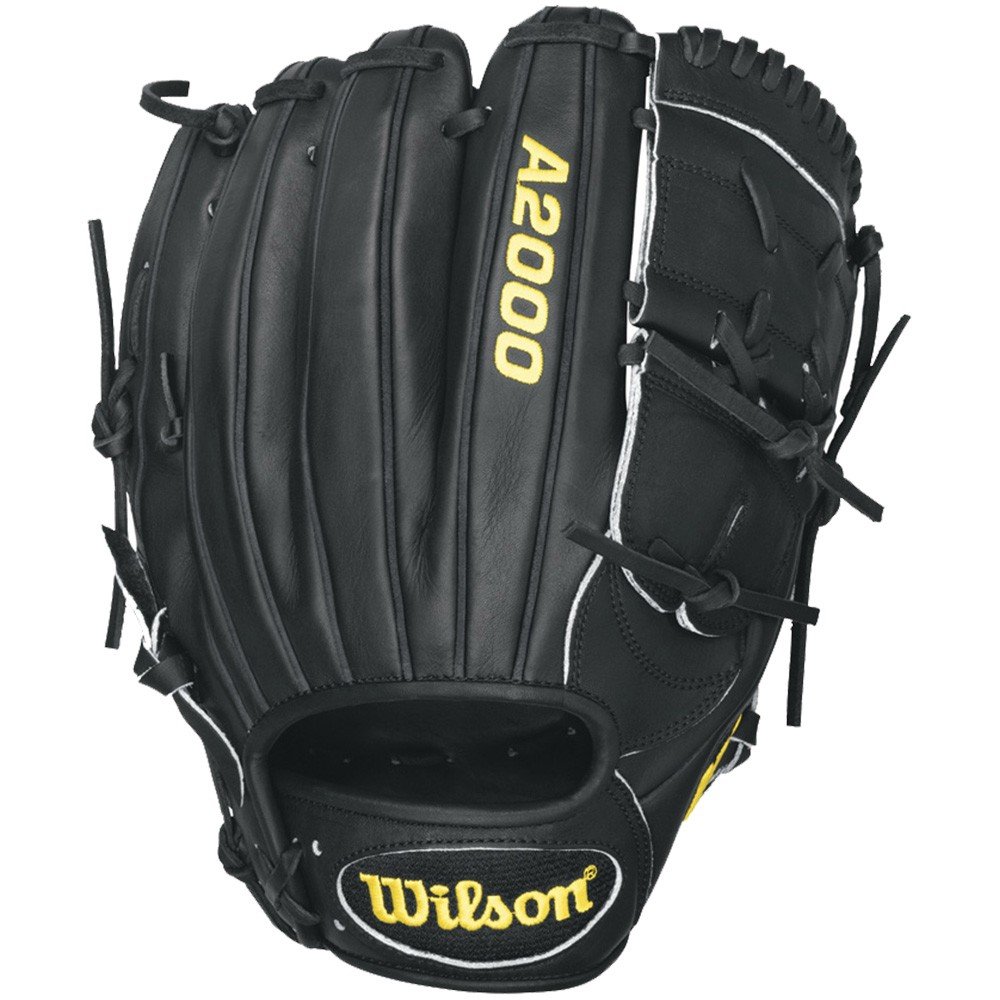
Wilson A2000 CK22GM 11.75" Baseball Glove
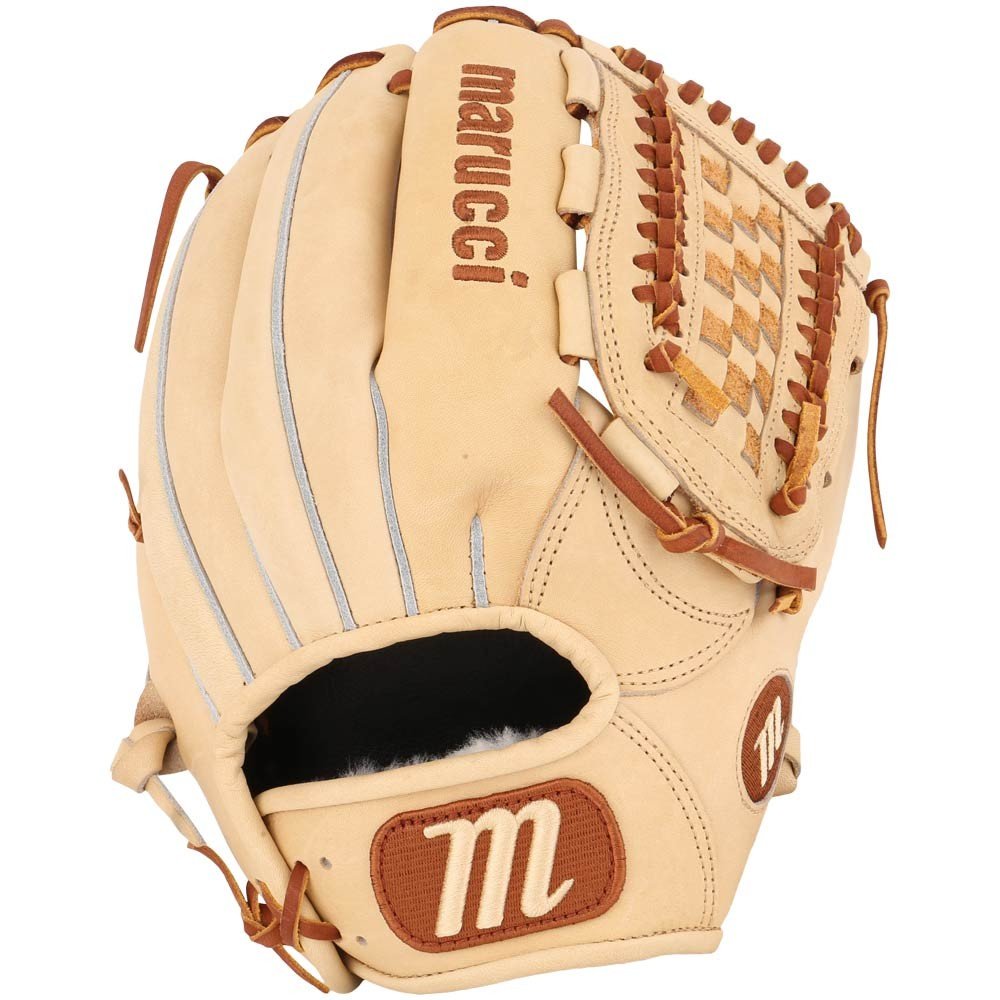
Marucci MFGHG12BT Honor The Game 12" Baseball Glove
Infield Gloves
These smaller gloves are made to allow for quick plays like a double play in the middle infield. They are shorter and have a shallower pocket than other gloves. Infielders typically want an open pocket that makes it easy to get the ball out quickly. This is typically an I-web, post web, Dual Post web, or modified trapeze pocket. The only position that sometimes wants a closed pocket is third base. This is because third base gets harder hits that a closed pocket can handle better than an open one will. The standard size for a baseball infield glove is 11.25 to 12 inches, and 11.5 to 12.5 inches for softball. For softball players, there aren’t as many selections in terms of webs because of the large ball, so the choices will be limited.
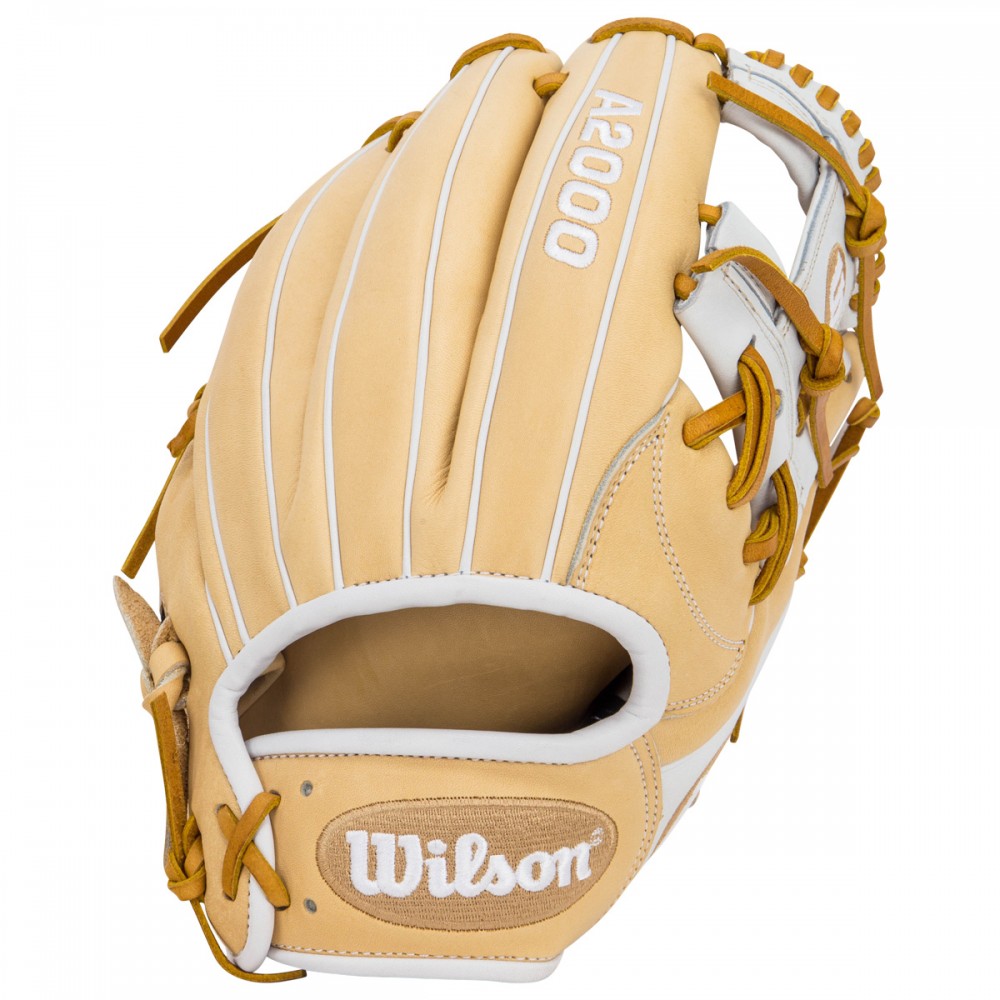
Wilson 2018 A2000 1787 11.75" BaseballMonkey Exclusive Baseball Glove
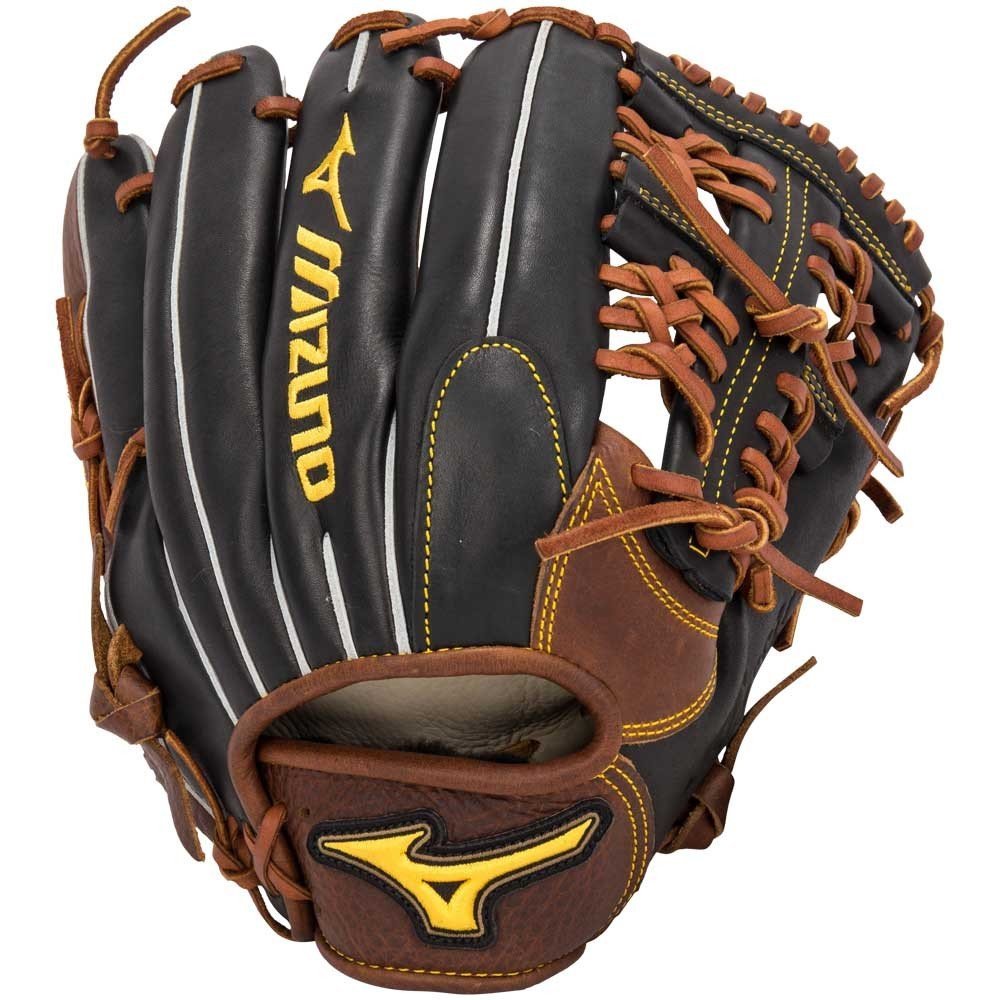
Mizuno GCP56S2 Classic Pro Soft 11.75" Baseball Glove
Outfield Gloves
These larger gloves are made for diving catches and to catch fly balls. This means that the gloves are longer and deeper with extra support in the fingers. The pocket designs for baseball are typically open with the main options being a modified trapeze and an H-web. These pockets are the best for long extension plays that need to keep the ball in the glove, such as diving plays and snow cones. For softball, the pockets can be closed webs, because they need to be extra deep to account for the size of the softball. The typical size of an outfielder’s glove is 9 to 15 inches for baseball and 9 to 15 inches for softball.
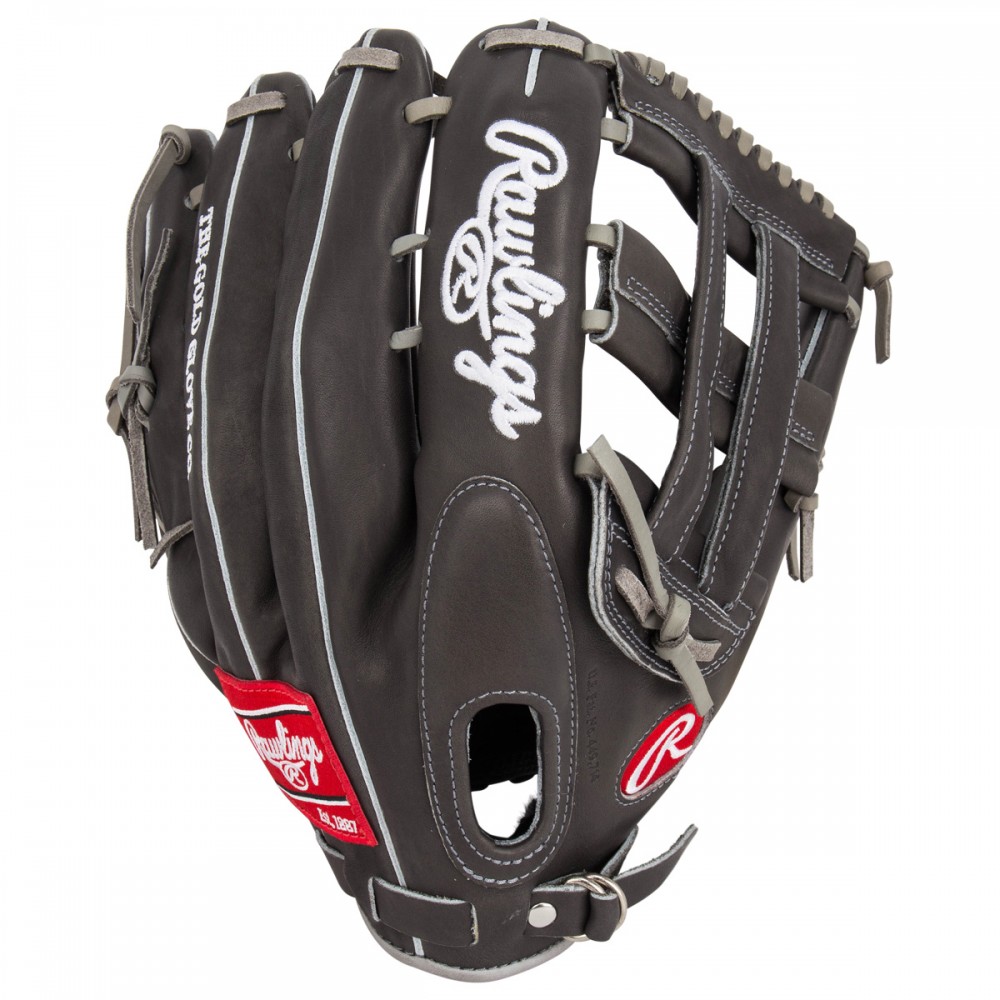
Rawlings Heart of the Hide PRO27HFDS 12.75" Pro Stock Baseball Glove
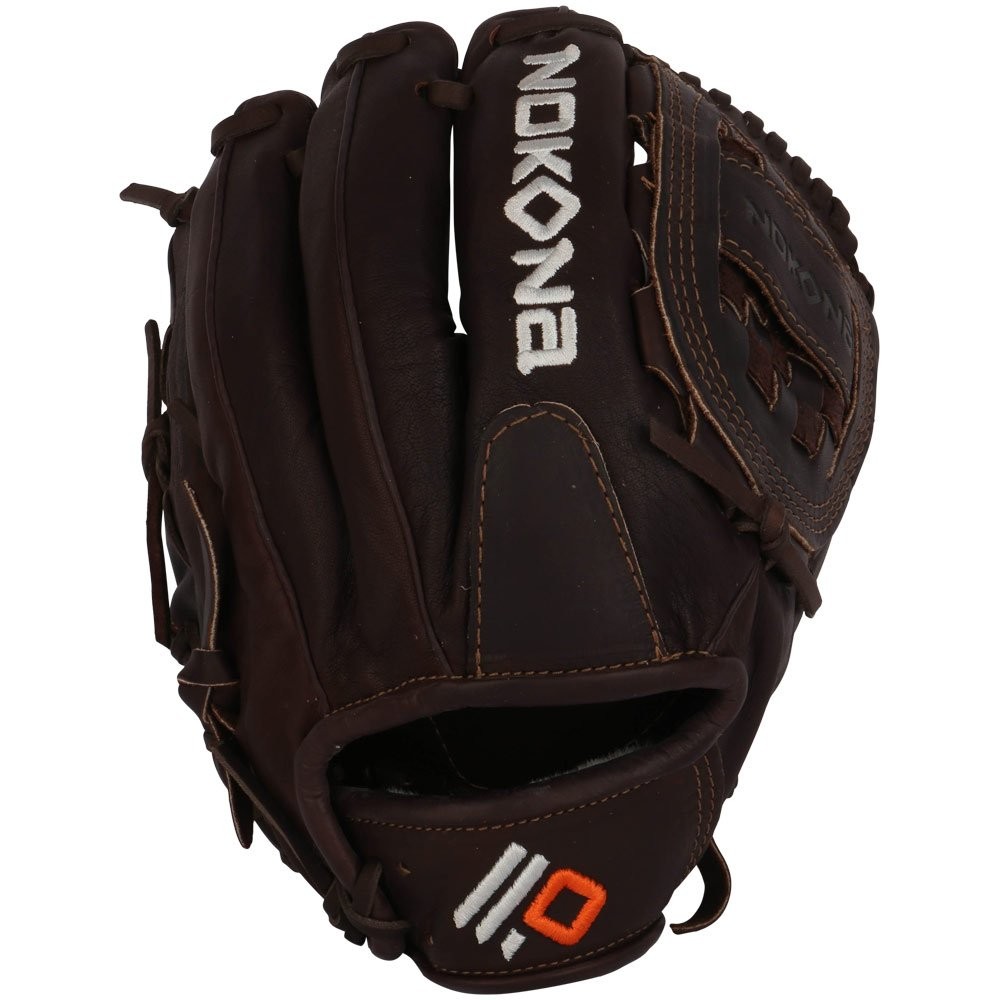
Nokona X2 Elite 12" Baseball Glove
Explore Baseball Monkeys selection of baseball gloves and softball gloves. Shop by position, size, or brand! One you’ve selected a glove, check out our guides on how to break in a glove and how to care for your new glove!
